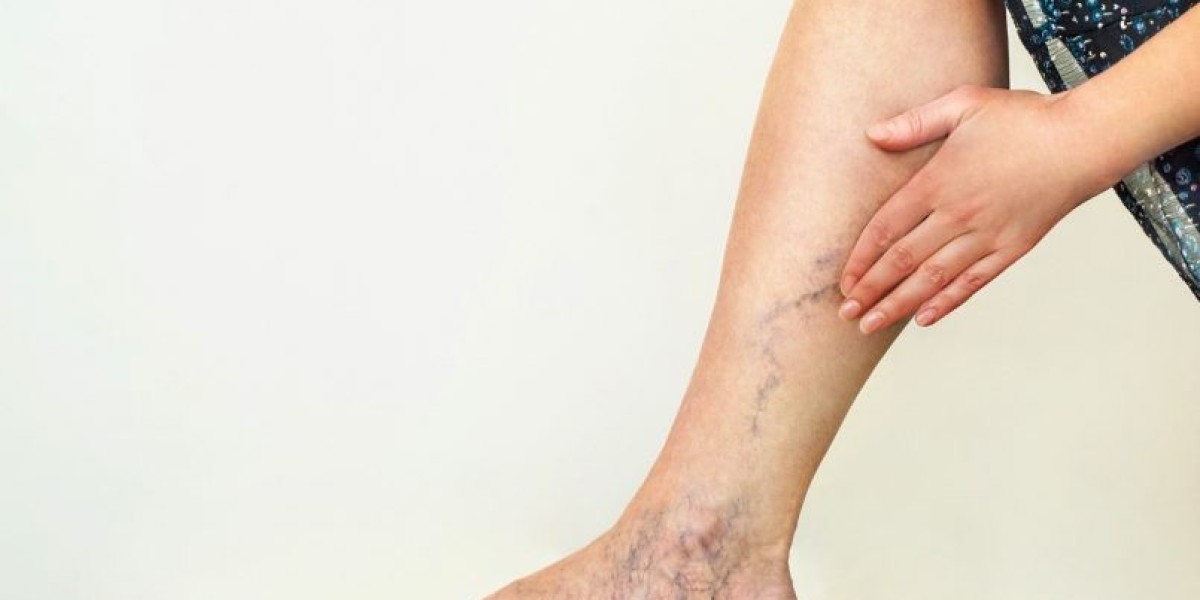Dealing with spider veins—those fine red, blue, or purple web‑like blood vessels just under the surface of the skin—can be both a cosmetic annoyance and, for some, a source of discomfort (itching, throbbing, heavy legs). If you’re in Islamabad and considering treatment, one of the most well‑recognized and effective options is sclerotherapy. Let’s explore what it is, how it works, what to expect, and how you can evaluate it in the local context. Spider veins treatment in Islamabad offers safe, effective, and modern solutions to help you achieve smoother, clearer, and more confident-looking skin.
What is Sclerotherapy?
Sclerotherapy is a minimally invasive medical procedure that involves injecting a special solution—a sclerosing agent—directly into the affected veins. The solution irritates the inner lining of the vein, causing it to collapse, stick together, and eventually be absorbed by the body. The blood that once flowed through that vein is redirected to healthier veins, improving both appearance and circulation. It’s been used for decades for spider veins and smaller varicose veins.
In the simplest sense: you have visible small vessels, the doctor injects a fine needle into them, the vein wall is damaged in a controlled way, the vein shrinks and fades away over weeks to months, and you can return to normal activities quite quickly.
How Does It Work — Step by Step
Consultation & Assessment – Before performing sclerotherapy, a qualified specialist (often a vascular surgeon, dermatologist or interventional physician) examines your leg or affected area. They may check for any underlying vein issues (e.g., reflux in deeper veins) because surface treatments may not be effective if the underlying cause is not addressed.
Preparation – Your skin is cleaned, possibly marked, and ready for injection. The doctor chooses the appropriate sclerosing agent and concentration depending on the size and location of your veins.
Injection – Using a very fine needle, the doctor injects the solution into each problematic vein. You may feel a slight sting or cramp sensation for a minute or two. Multiple veins may be treated in one session.
Post‑Injection Care – Immediately after injection, the doctor will apply pressure or massage the area to help disperse the solution, and apply a bandage or compression stocking over the region. You’ll be asked to walk around briefly to promote circulation.
Follow‑Up & Sessions – Depending on the extent of the veins, you may need more than one session (commonly 1‑4 or more). Results begin to appear over weeks, with full fading taking up to months for some veins.
Aftercare – You’ll likely be advised to wear compression stockings for a certain period, avoid hot baths/saunas, avoid prolonged standing or heavy exercise for a few days, and protect the area from direct sun until healed.
Benefits of Sclerotherapy
Minimally invasive: No large incisions, general anesthesia or lengthy hospital stays are required.
Quick procedure: Many sessions take around 15‑30 minutes (sometimes slightly longer depending on number of veins).
Good cosmetic results: For many patients, visible improvement is quite significant for small to medium‑sized spider veins.
Fast recovery: Most people return to normal activities soon after treatment.
Relatively affordable: In Islamabad, clinics offering sclerotherapy list it as one of the more cost‑effective treatments compared to high‑end laser or endovenous procedures.
What to Expect in Islamabad – Practical Considerations
Cost range: For sclerotherapy in Islamabad, one clinic lists costs around PKR 15,000‑30,000 per session (depending on area and size of veins).
Number of sessions: Smaller, superficial veins may require only 1 or 2 sessions. More extensive patterns (legs both sides, many veins) may need 2‑4 or more.
Time to results: Many patients begin to see fading of veins within a few weeks; full maturation (complete fading) may take 2‑3 months or more for some veins.
Clinic selection: Choose a clinic where the doctor evaluates you properly (including checking for deeper vein issues). Even the best surface treatment won’t last if underlying reflux is untreated.
After‑care matters: To get the full benefit and prevent recurrence (or formation of new veins), you’ll need to follow the after‑care advice: compression, walking, avoiding heavy standing/sitting, leg elevation, etc.
Realistic expectations: Sclerotherapy can dramatically reduce the appearance of veins, but it doesn’t guarantee “perfect” legs. Some fine residual veins may remain, and new veins can appear over time. The earlier you treat, the better outcome generally.
Risks and Things to Ask
While sclerotherapy is generally safe, you should ask your physician about:
Any allergies or previous reactions to sclerosing agents.
Whether you have undiagnosed deeper vein problems (which should be checked via ultrasound).
Possible side‑effects: mild bruising, pigmentation changes, temporary discomfort, small risk of thrombophlebitis (inflammation of veins), rarely ulceration or skin discoloration if treated veins leak.
How many sessions they estimate for your case and what the cost will be in total including follow‑up.
What happens if new veins appear — are follow‑up treatments included or extra?
What compression garments they will recommend and for how long.
Why Sclerotherapy Might Be a Smart Choice
If your spider veins are primarily the fine or medium caliber surface veins, and you don’t have major varicose veins or reflux issues, sclerotherapy offers a very good balance of effectiveness, cost, and recovery. In Islamabad, where many clinics now offer it as standard part of vein‑care, you can find options that match your budget and time availability. You’ll avoid the trauma, downtime and higher cost of surgery or high‑end endovenous methods when they are not strictly needed.
Final Thoughts
If you’re self‑conscious about your spider veins, or you occasionally feel heaviness or tingling in your legs, sclerotherapy could be a practical, safe, and effective solution.






